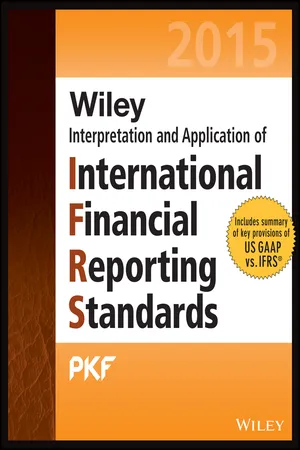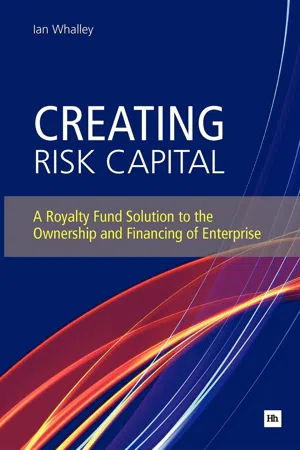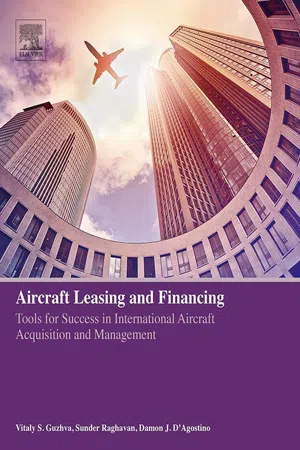Business
Leveraged Leases
Leveraged leases involve a lessee using borrowed funds, in addition to their own equity, to finance the acquisition of an asset. The lessor typically provides a portion of the funds, and the remaining amount is borrowed. This structure allows the lessee to benefit from tax advantages associated with ownership, while the lessor retains some ownership interest in the asset.
Written by Perlego with AI-assistance
Related key terms
4 Key excerpts on "Leveraged Leases"
- eBook - ePub
- Bruce Mackenzie, Danie Coetsee, Tapiwa Njikizana, Raymond Chamboko(Authors)
- 2011(Publication Date)
- Wiley(Publisher)
This type is mentioned separately both here and in the following section on how to account for leases because it is to receive a different accounting treatment by a lessor. A leveraged lease meets all the definitional criteria of a direct financing lease, but differs because it involves at least three parties: a lessee, a long-term creditor, and a lessor (commonly referred to as the equity participant). Other characteristics of a leveraged lease are as follows: 1. The financing provided by the long-term creditor must be without recourse as to the general credit of the lessor, although the creditor may hold recourse with respect to the leased property. The amount of the financing must provide the lessor with substantial leverage in the transaction. 2. The lessor’s net investment declines during the early years and rises during the later years of the lease term before its elimination. Accounting for Leases—Lessee As discussed in the preceding section, there are two classifications under IAS 17 that apply to a lease transaction in the financial statements of the lessee. They are as follows: 1. Operating 2. Finance Operating leases. The accounting treatment accorded an operating lease is relatively simple; rental expense should be charged to profit or loss as the payments are made or become payable - eBook - ePub
Wiley IFRS 2015
Interpretation and Application of International Financial Reporting Standards
- (Author)
- 2015(Publication Date)
- Wiley(Publisher)
Leveraged Leases. Leveraged Leases are discussed in detail in Appendix B of this chapter because of the complexity involved in the accounting treatment based on guidance available under US GAAP, where this topic has been given extensive coverage. Under IFRS, this concept has been defined, but with only a very brief outline of the treatment to be accorded to this kind of lease. A leveraged lease is defined as a finance lease which is structured such that there are at least three parties involved: the lessee, the lessor, and one or more long-term creditors who provide part of the acquisition finance for the leased asset, usually without any general recourse to the lessor. Succinctly, this type of a lease is given the following unique accounting treatment:1. The lessor records his or her investment in the lease net of the nonrecourse debt and the related finance costs to the third-party creditor(s).2. The recognition of the finance income is based on the lessor’s net cash investment outstanding in respect of the lease.Sale-Leaseback Transactions
Sale-leaseback describes a transaction where the owner of property (the seller-lessee) sells the property and then immediately leases all or part of it back from the new owner (the buyer-lessor). These transactions may occur when the seller-lessee is experiencing cash flow or financing problems or because there are tax advantages in such an arrangement in the lessee’s tax jurisdiction. The important consideration in this type of transaction is recognition of two separate and distinct economic transactions. However, it is important to note that there is not a physical transfer of property. First, there is a sale of property, and second, there is a lease agreement for the same property in which the original seller is the lessee and the original buyer is the lessor. This is illustrated as follows:A sale-leaseback transaction is usually structured such that the sales price of the asset is greater than or equal to the current market value. The higher sales price has the concomitant effect of a higher periodic rental payment over the lease term than would otherwise have been negotiated. The transaction is usually attractive because of the tax benefits associated with it, and because it provides financing to the lessee. The seller-lessee benefits from the higher price because of the increased gain on the sale of the property and the deductibility of the lease payments, which are usually larger than the depreciation that was previously being taken. The buyer-lessor benefits from both the higher rental payments and the larger depreciable basis. - eBook - ePub
Creating Risk Capital
A Royalty Fund Solution to the Ownership and Financing of Enterprise
- Ian Whalley(Author)
- 2011(Publication Date)
- Harriman House(Publisher)
In more recent times, the leasing of coal wagons in the early nineteenth century was an important means of financing capital-intensive railways in the days before the limited liability company provided a more suitable structure. Since then leasing has grown to a stage where it plays a major role in asset finance.In a leasing agreement the lessor purchases an asset and rents it out to the user – the lessee – for a series of payments over a period of time agreed in advance. This period can extend up to 15 years or more, depending on the type of asset and its life. At the expiration of this period, the parties may negotiate a secondary lease, or otherwise dispose of the asset.Strictly speaking, leasing is not the same as borrowing, because the asset remains the property of the lessor. However certain leases – namely finance or capital leases where the rentals pay out most of the capital cost of the asset and associated interest – substantially transfer the risks and rewards of ownership of the asset to the lessee. Such leases are regarded as equivalent to borrowing, and are formally treated as debt under accounting standards in Britain and elsewhere.In contrast to finance leases, operating leases provide for rentals which pay out only part of the capital cost of the asset and associated interest. Such leases often cover services as well, such as maintenance and insurance undertaken by the owner. Operating leases are commonly used for temporary plant hire and for equipment where technology is changing rapidly, or for services like car rental. While in effect such leases provide finance for capital assets, they are often seen more as part of a different industry, like construction or car rental, than as financing.Leasing can offer a number of advantages over borrowing, starting with cash flow. With a lease agreement up to 100% of the cost of the asset is financed and payments can be tailored to the expected benefits from its use.[6] - eBook - ePub
Aircraft Leasing and Financing
Tools for Success in International Aircraft Acquisition and Management
- Vitaly Guzhva, Sunder Raghavan, Damon J. D’Agostino(Authors)
- 2018(Publication Date)
- Elsevier(Publisher)
A key characteristic of this type of lease is the involvement of three parties: a lessee, a lessor, and a long-term creditor. The lessee is typically the end user of the asset and should have a strong credit rating. The lessor, otherwise known as the equity investor, invests funds that are less than the full value of the aircraft. Although the amount can vary from transaction to transaction, lessors can invest from 10% to 50% of the value of the aircraft. Investing funds in the transaction places the lessor (leasing company) in an ownership position which allows it to then capitalize on the tax benefits from the depreciation of the asset. The long-term creditor is the final party and will fund the remaining cost of the aircraft. Given the level of the cost associated with the purchase of an aircraft, it is not uncommon to have more than one long-term creditor participating in a leveraged lease transaction. For the long-term creditors, this type of lease is a nonrecourse lease, and their lien on the equipment value precedes that of the lessor in the event of default, where they would then take ownership of the asset.The leverage effect of borrowing creates multiple benefits in the transaction that can be passed through to the parties involved. Through the lessor’s ability to depreciate the value of the asset and deduct interest payments made to the lender, they are able to pass the economic benefits down to the lessee in the form of lower lease rates. Under a leveraged lease, the lease payments made by the lessee are funneled through the lessor and go directly to the lender; the lessor then has a claim on any surplus remaining once both principal and interest payments have been covered.Sale and Leaseback
Under a sale and leaseback transaction, an airline, as owner of an aircraft, will sell its aircraft to a third party at an agreed-upon price, usually an aircraft-leasing company or a bank, and immediately undertake an agreement to lease that aircraft back on previously agreed-upon terms. The third-party purchaser then becomes the owner and lessor, while the airline that sold the aircraft becomes the lessee. The airline therefore gets an infusion of cash upfront from the sale of the aircraft while making rental payments over time and retaining the use of the aircraft for its operations. Further by transferring ownership through the sale of the asset, the airline effectively transfers the residual value risk at the end of the lease to the lessor.
Index pages curate the most relevant extracts from our library of academic textbooks. They’ve been created using an in-house natural language model (NLM), each adding context and meaning to key research topics.



